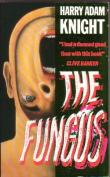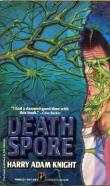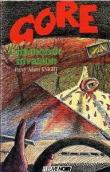AustLit
Latest Issues
AbstractHistoryArchive Description
'What would happen if, through a genetic experiment gone awry, fungi - mushrooms, toadstools, molds and yeasts - were to go out of control and grow with unprecedented vigor and speed and tenacity, and in places formerly inimicable to them? Knight has pulled out the stops to produce an imaginative and fast-paced sci-fi horror tale set in the British Isles. The protagonist is Barry Wilson, a semi-successful author of spy novels and a former mycologist. Barry's wife Jane, from whom he is separated, is the scientist whose experiment has lead to the disaster, and the British government has called upon Barry to help find Jane and her lab notes. Crossing London in an armored tank, Barry and two other volunteers observe all sorts of grotesqueries: people and animals covered with multicolored fungi, some still alive, some now quite insane; farms and buildings and forests draped in spongy shrouds; mushrooms tall as skyscrapers. Barry survives a series of hair-raising adventures and eventually locates his wife, who has gone mad and has become the high priestness of a cult of fungi-loving female separatists. But he gets the research notes. A first-rate and vivid thriller.'
Source: http://www.fantasticfiction.co.uk (Sighted: 02/06/2010)
Notes
-
Written by John Brosnan and Leroy Kettle under the joint pseudonym 'Harry Adam Knight', a pseudonym that Brosnan also occasionally used for solo work.
Publication Details of Only Known VersionEarliest 2 Known Versions of
Other Formats
- Also sound recording.
Works about this Work
-
The Australian Horror Novel Since 1950
2012
single work
criticism
— Appears in: Sold by the Millions : Australia's Bestsellers 2012; (p. 112-127) According to James Doig the horror genre 'was overlooked by the popular circulating libraries in Australia.' In this chapter he observes that this 'marginalization of horror reflects both the trepidation felt by the conservative library system towards 'penny dreadfuls,' and the fact that horror had limited popular appeal with the British (and Australian) reading public.' Doig concludes that there is 'no Australian author of horror novels with the same commercial cachet' as authors of fantasy or science fiction. He proposes that if Australian horror fiction wants to compete successfully 'in the long-term it needs to develop a flourishing and vibrant small press contingent prepared to nurture new talent' like the USA and UK small presses.' (Editor's foreword xii) -
The Australian Horror Novel Since 1950
2012
single work
criticism
— Appears in: Sold by the Millions : Australia's Bestsellers 2012; (p. 112-127) According to James Doig the horror genre 'was overlooked by the popular circulating libraries in Australia.' In this chapter he observes that this 'marginalization of horror reflects both the trepidation felt by the conservative library system towards 'penny dreadfuls,' and the fact that horror had limited popular appeal with the British (and Australian) reading public.' Doig concludes that there is 'no Australian author of horror novels with the same commercial cachet' as authors of fantasy or science fiction. He proposes that if Australian horror fiction wants to compete successfully 'in the long-term it needs to develop a flourishing and vibrant small press contingent prepared to nurture new talent' like the USA and UK small presses.' (Editor's foreword xii)
-
The Australian Horror Novel Since 1950
2012
single work
criticism
— Appears in: Sold by the Millions : Australia's Bestsellers 2012; (p. 112-127) According to James Doig the horror genre 'was overlooked by the popular circulating libraries in Australia.' In this chapter he observes that this 'marginalization of horror reflects both the trepidation felt by the conservative library system towards 'penny dreadfuls,' and the fact that horror had limited popular appeal with the British (and Australian) reading public.' Doig concludes that there is 'no Australian author of horror novels with the same commercial cachet' as authors of fantasy or science fiction. He proposes that if Australian horror fiction wants to compete successfully 'in the long-term it needs to develop a flourishing and vibrant small press contingent prepared to nurture new talent' like the USA and UK small presses.' (Editor's foreword xii) -
The Australian Horror Novel Since 1950
2012
single work
criticism
— Appears in: Sold by the Millions : Australia's Bestsellers 2012; (p. 112-127) According to James Doig the horror genre 'was overlooked by the popular circulating libraries in Australia.' In this chapter he observes that this 'marginalization of horror reflects both the trepidation felt by the conservative library system towards 'penny dreadfuls,' and the fact that horror had limited popular appeal with the British (and Australian) reading public.' Doig concludes that there is 'no Australian author of horror novels with the same commercial cachet' as authors of fantasy or science fiction. He proposes that if Australian horror fiction wants to compete successfully 'in the long-term it needs to develop a flourishing and vibrant small press contingent prepared to nurture new talent' like the USA and UK small presses.' (Editor's foreword xii)
-
cEngland,ccUnited Kingdom (UK),cWestern Europe, Europe,







